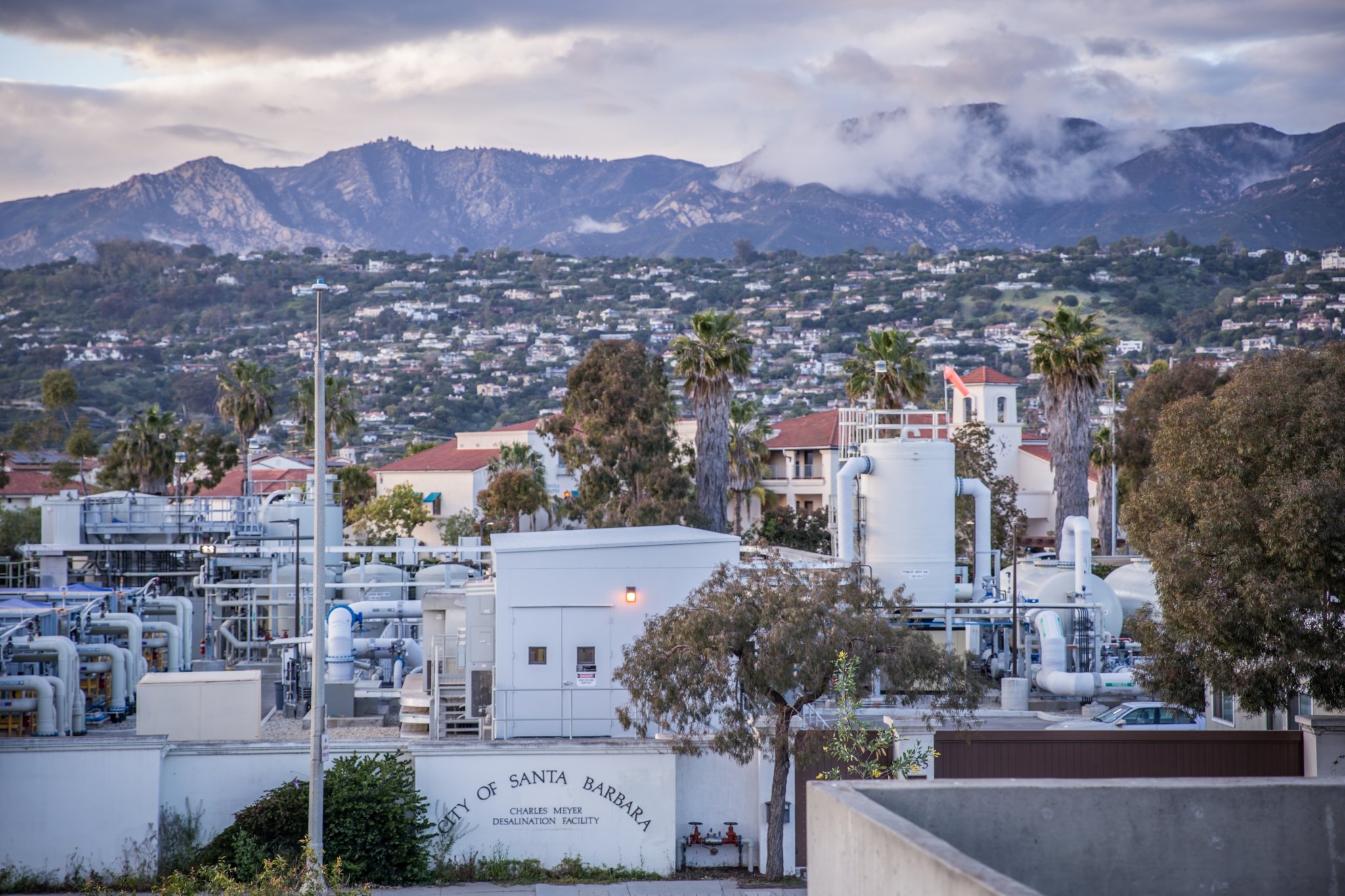What About Desal?
Photo: Santa Barbara Independent
Evaluating the Potential Benefits and Downsides of Desalination
What are the specifics of modern desalination technology?
Modern desalination technology employs one of two approaches: multi-stage flash distillation or reverse osmosis. Flash distillation uses heat to evaporate seawater; the vapor, free from salt and other impurities, is then recondensed. Reverse osmosis removes water from salt through temperature differentials across a special membrane. Most modern desalination plants employ reverse osmosis.
Can desalination solve California’s water crisis?
Desalination can’t scale sufficiently to meet the needs of a state with 40 million people and a diverse economy that ranges from agriculture to high technology.
What are the downsides of desalination?
Desalination requires a lot of energy: a major concern if fossil fuels are used to generate the necessary power, given the dire planet-warming effects of atmospheric carbon emissions.
There can be significant environmental impacts from desalination. Marine life can be adversely affected through the intake of seawater and the offshore discharge of concentrated brine, and the siting of desalination plants may degrade sensitive coastal habitats and wetlands.
Desalinated water is expensive. As noted in a 2019 peer-reviewed study by water resource researchers Heather Cooley and Peter Gleick, it is the most costly of commonly promoted water supply alternatives, including stormwater capture, recycling, and conservation. Desalinated water may or may not be as expensive as state and federal project water depending on annual availability and individual district contracts. It is generally much pricier than water from local sources.
Is desalination appropriate in some situations?
Yes – assuming the facilities are small enough in scope to avoid detrimental impacts and production is limited. Desalination is not dependent on rain or snow, and that is its great advantage. But desalinated water should never be used as a primary source, and desalination capacity should never be promoted as a justification for development. Desalination is only appropriate as an emergency response for certain coastal communities during drought. Further, desalination plants should be owned and managed by the public; they should never be private, for-profit enterprises.
What are the features of an “appropriate” desalination plant?
The Charles E. Meyer Desalination Plant in Santa Barbara is a good model for desalination projects. Its daily output is limited to three million gallons, and it is only activated during extreme water shortages. Built in 1993, it was shut down after six months of operation following access to sufficient water from other sources. It is now operating due to California’s ongoing drought. Major retrofits have been implemented at CEM since its construction. It now uses 40 percent less electricity than specified by its original design, and its intake pipes have been fitted with state-of-the art screens to minimize marine life impacts. The CEM physical footprint is small, and environmental impacts have been minimal.
Any new desalination plants should meet the following specifications:
Capacity must be limited to 10,000 acre-feet a year.
Intakes must be situated in wells below the ocean floor to protect marine life.
Outflow must be dispersed through extended perforated pipes to disseminate and dilute. concentrated brine over wide areas, preventing the creation of dead zones.
Plants must be owned and operated by public agencies – not private parties.
Desalination plants must only be operated as drought buffers, not as primary water sources.
What characteristics would distinguish an “inappropriate” desalination facility?
Size and capacity are the foremost criteria. The proposed (and recently rejected) Poseidon desalination plant at Huntington Beach is a case in point. With a production capacity of 50 million gallons of drinking water daily, it was simply too large and its potential drawbacks too significant to warrant approval.
Poseidon Huntington Beach was hobbled by numerous problems:
It would have discharged 56 million gallons of concentrated brine daily to offshore waters.
The data on marine life impacts used by promoters were 17 years old and outdated.
The proposed site for the project likely would have flooded as sea levels rise from climate change.
Poseidon would have been privately-owned, meaning profit margins – not public welfare – would have determined its management and operation.
Customers for the plant’s desalinated water had not been confirmed.
The required energy may not have come from “green” sources.
The distribution pipe for the desalinated water would have run adjacent to a California superfund site, potentially releasing toxic chemicals into the community during construction and operations.
What about desalinating brackish groundwater?
Groundwater desalination has been proposed as an option for agriculture, particularly in the San Joaquin Valley. But a thorough quantification of groundwater – including brackish groundwater – should be completed before any such plans are implemented. Many of our groundwater basins already are overexploited, leading to land subsidence and aquifer contamination – and the problem is particularly acute in the San Joaquin Valley.

